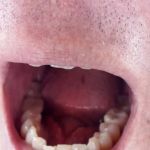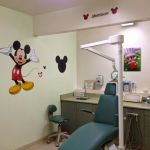How to Disinfect Dental Tools at Home: A Comprehensive Guide for Safe and Effective Cleaning
- Why Disinfecting Dental Tools at Home is Essential
- Steps to Disinfect Dental Tools at Home
- Best Products for Disinfecting Dental Tools
- Common Mistakes to Avoid When Disinfecting Dental Tools
- How to Maintain Dental Tools for Longevity
1. Why Disinfecting Dental Tools at Home is Essential
Disinfecting dental tools at home is a critical part of maintaining both your oral health and the cleanliness of your tools. Whether you're using dental tools for regular care, orthodontic maintenance, or cosmetic procedures, bacteria, viruses, and other pathogens can easily accumulate on these instruments. Proper cleaning ensures that you're not inadvertently introducing harmful germs into your mouth, potentially causing infections or other health complications.
For example, a common scenario is using dental picks, tweezers, or other tools for cleaning between your teeth. If these tools aren't disinfected properly, they can carry harmful bacteria from one area of your mouth to another, leading to gum disease, cavities, or even oral infections.
2. Steps to Disinfect Dental Tools at Home
Disinfecting your dental tools at home is straightforward, but it requires attention to detail to ensure thorough cleaning. Follow these steps for effective disinfection:
2.1 Clean the Tools Before Disinfecting
Start by cleaning your dental tools with warm water and mild soap to remove any visible debris or residue. Use a small brush, like an old toothbrush, to scrub the tool’s surfaces gently. Make sure all food particles or other substances are removed before moving on to the disinfection process.
2.2 Use a Disinfecting Solution
Choose a disinfecting solution that is safe for dental instruments. Options include alcohol-based solutions (70% isopropyl alcohol), hydrogen peroxide, or a commercial dental disinfectant. Submerge the tools in the solution for at least 10-15 minutes, following the instructions on the product label to ensure effectiveness.
2.3 Dry and Store the Tools Properly
After disinfection, rinse the tools thoroughly with clean water to remove any remaining disinfectant residue. Dry them completely with a clean towel or paper towel. Finally, store your disinfected tools in a dry, clean case to prevent recontamination.
3. Best Products for Disinfecting Dental Tools
Choosing the right disinfecting products for your dental tools is essential to ensuring proper hygiene. Here are some of the best options available:
3.1 70% Isopropyl Alcohol
Isopropyl alcohol is one of the most commonly used disinfectants for dental tools. It’s effective at killing most bacteria, viruses, and fungi. You can purchase it at most pharmacies or online. Simply immerse your tools in the alcohol for the recommended time to ensure they are fully sanitized.
3.2 Hydrogen Peroxide
Hydrogen peroxide is another great disinfectant that also helps to clean stains from your dental tools. It’s a safe and natural option for disinfecting and is especially effective against germs and bacteria. Use a 3% concentration of hydrogen peroxide for best results.
3.3 Commercial Dental Disinfectants
There are also dental-specific disinfectant products designed for cleaning tools. These products are formulated to ensure proper sterilization of dental instruments. They are often used by dental professionals, but some are available for personal use at home. Look for products with proven effectiveness and follow the instructions carefully.
4. Common Mistakes to Avoid When Disinfecting Dental Tools
While disinfecting dental tools is crucial, it’s easy to make mistakes that can compromise the effectiveness of the cleaning process. Here are a few common errors to watch out for:
4.1 Using Harsh Chemicals
Some people make the mistake of using harsh chemicals that can damage dental tools or leave harmful residues behind. Avoid bleach or other strong chemicals that are not specifically designed for dental tool disinfection.
4.2 Not Following the Correct Disinfection Time
Each disinfectant has a recommended contact time for effectiveness. Not leaving your tools in the disinfecting solution for long enough can result in incomplete sterilization, allowing harmful bacteria to remain on your tools.
4.3 Not Storing Tools Properly
After disinfecting your tools, improper storage can cause them to become contaminated again. Always store your tools in a clean, dry, and sealed container to prevent bacteria from entering and multiplying on the surfaces.
5. How to Maintain Dental Tools for Longevity
Proper maintenance of your dental tools not only ensures hygiene but also extends their lifespan. Here are a few tips for keeping your tools in top condition:
5.1 Regular Cleaning
Clean your dental tools regularly after each use to prevent buildup of plaque, tartar, and bacteria. Avoid leaving them submerged in water for extended periods, as this can lead to rust or corrosion, especially with metal tools.
5.2 Inspect for Damage
Inspect your dental tools periodically for signs of wear, rust, or damage. If any tools are compromised, it’s best to replace them to maintain optimal hygiene standards.
5.3 Store Tools in a Safe Place
Proper storage is essential to prevent damage. Use a protective case or pouch to keep your tools safe from dirt, moisture, and accidental damage. Ensure the storage area is clean and dry to maintain the tools’ condition.
If you’re looking for top-quality dental tools and accessories, consider visiting Dentistry Toothtruth for recommendations and reliable products to meet your needs.







 Dental Care at Dr. Phillips4.0 (205 review)
Dental Care at Dr. Phillips4.0 (205 review) Madison Family Dental Associates4.0 (280 review)
Madison Family Dental Associates4.0 (280 review) Higley Park Dental4.0 (563 review)
Higley Park Dental4.0 (563 review) MapleTree Pediatric Dentistry4.0 (102 review)
MapleTree Pediatric Dentistry4.0 (102 review) Smile Central Dental4.0 (506 review)
Smile Central Dental4.0 (506 review) Schnierow Dental Care3.0 (177 review)
Schnierow Dental Care3.0 (177 review) The Importance of Oral Health Education During Pregnancy for a Healthy Pregnancy
The Importance of Oral Health Education During Pregnancy for a Healthy Pregnancy Best Tips for Brushing Your Teeth Properly for Healthy Gums: Essential Techniques for Oral Health
Best Tips for Brushing Your Teeth Properly for Healthy Gums: Essential Techniques for Oral Health Why Skipping Dental Checkups Can Lead to Bigger Oral Health Problems
Why Skipping Dental Checkups Can Lead to Bigger Oral Health Problems Advantages of Porcelain Dental Restorations
Advantages of Porcelain Dental Restorations How Can Diabetes Cause Tooth and Gum Problems? Preventing and Managing Oral Health Issues
How Can Diabetes Cause Tooth and Gum Problems? Preventing and Managing Oral Health Issues Healthy Habits for Promoting Good Oral Health and Hygiene: Tips for a Healthy Smile
Healthy Habits for Promoting Good Oral Health and Hygiene: Tips for a Healthy Smile